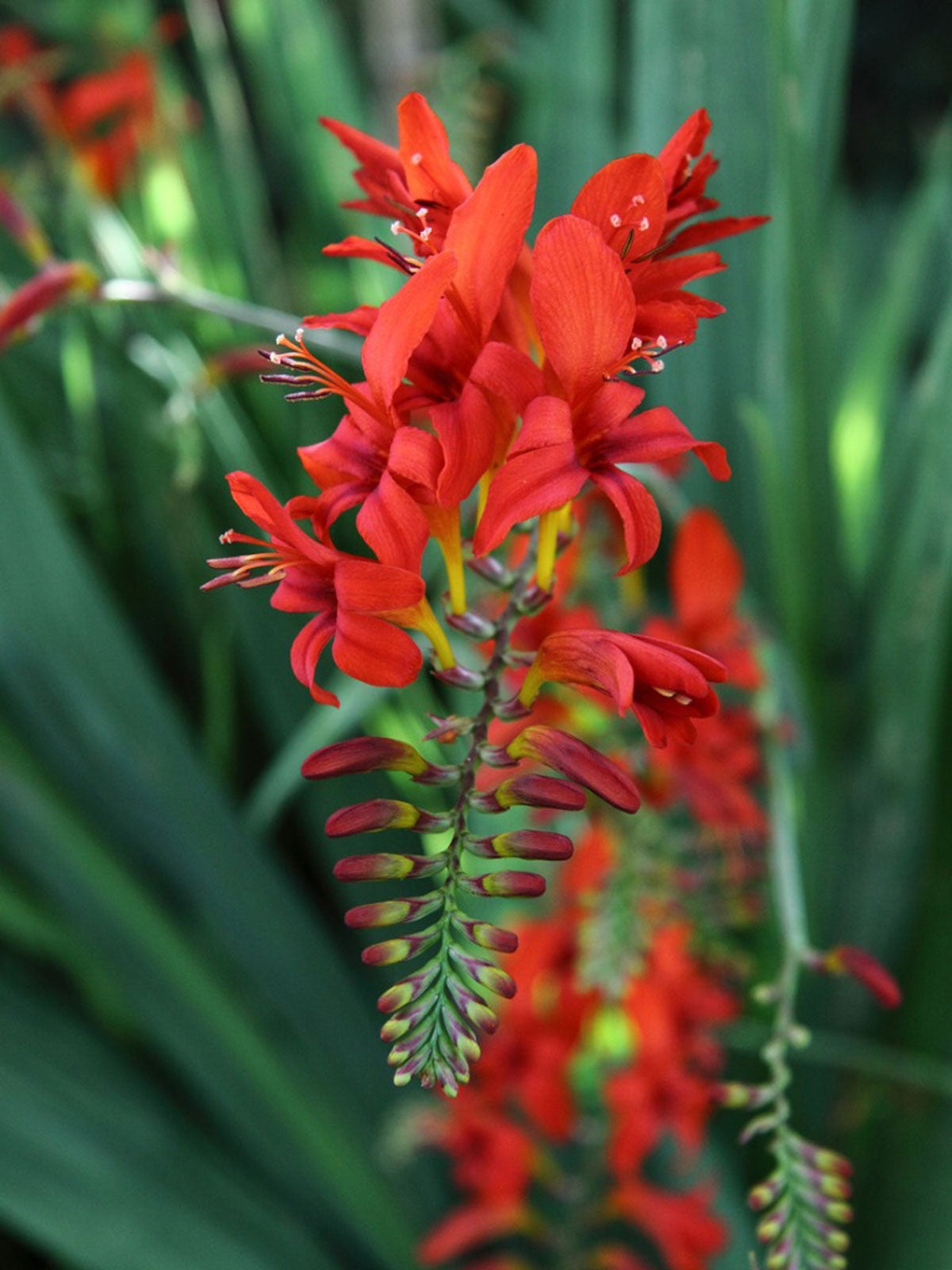Crocosmia Bulb Care: Tips For Growing Crocosmia Flowers


Growing crocosmia flowers in the landscape produce masses of sword-shaped foliage and brightly colored blooms. Crocosmias are members of the Iris family. Originally from South Africa, the name comes from the Greek words for “saffron” and “smell.”
Learning how to plant crocosmia bulbs can give your garden dimension and sunrise colors of red, orange, and yellow, and the funnel-shaped blooms have a subtle scent that increases when they are dried.
Crocosmia Plants
Crocosmia blooms are produced on slender stems of 2 feet (61 cm.) or more in length. The flowers appear in May or June and the plant will keep producing all summer. Crocosmia flowers make excellent cut flowers for indoor arrangements.
These plants are hardy in USDA zones 5 to 9. Crocosmia plants may become invasive over time and require a large space, but there are 400 cultivars to choose from, some of which have a slower spreading rate. The green leaves may be rippled or pleated and are an attractive sight in the garden even before the flowers form.
How to Plant Crocosmia Bulbs
Crocosmia plants grow from corms, which are closely related to bulbs. Growing crocosmia flowers from corms is not different from planting bulbs. Both are simply underground storage organs for a plant, which contain the nutrients and embryo necessary for the plant to sprout.
Corms differ from bulbs by the lack of rings on the interior but otherwise function in a similar manner. Crocosmias prefer slightly acidic soil. Make sure the garden bed is nutrient-rich and well-drained, but lightly moist. Plant the corms in spring about 6 to 8 inches (15-20 cm.) apart at a depth of 3 to 5 inches (8-13 cm.).
Plant them in clusters for maximum effect. The corms will naturalize, or produce offsets, over time. Plant crocosmias in full to part sun for the best results.
Sign up for the Gardening Know How newsletter today and receive a free copy of our e-book "How to Grow Delicious Tomatoes".
Crocosmia Bulb Care
Once planted, little is needed in the way of crocosmia bulb care. The corms are hardy and rarely need to be lifted for winter except in areas below USDA zone 5. In these areas, plant them in pots and then move the pots to a sheltered location for winter storage.
You can also dig them up, dry the bulb, and store them where temperatures are moderate over the freezing period. Then plant them anew when soil temperatures warm up. Division can be done in early spring, by lifting the clumps and cutting apart sections of the grouped corms.
Replant these in other areas for more of the bright, appealing flowers. Crocosmia plants have few pest or disease problems and require no special maintenance. They are an easy addition to the home landscape and attract hummingbirds and pollinators. Crocosmia flowers are harvested for cutting when the lower blooms have just begun to open.
Hold the stems in 100 degrees F. (38 C.) water in a dark place for 48 hours. This increases the length of time the flowers will stay fresh in a cut floral display. Growing and caring for crocosmias is easy and once planted, you'll be rewarded by beautiful blooms each year.

Bonnie Grant is a professional landscaper with a Certification in Urban Gardening. She has been gardening and writing for 15 years. A former professional chef, she has a passion for edible landscaping.